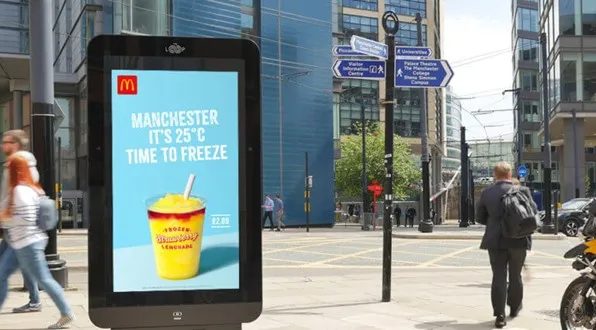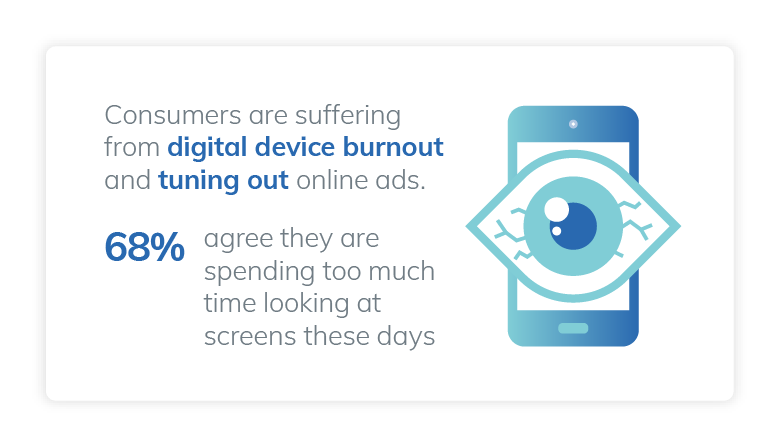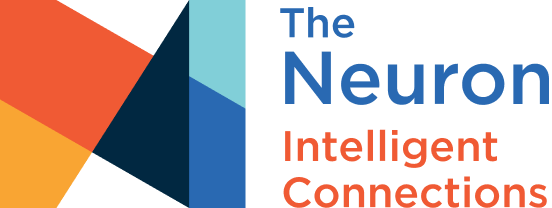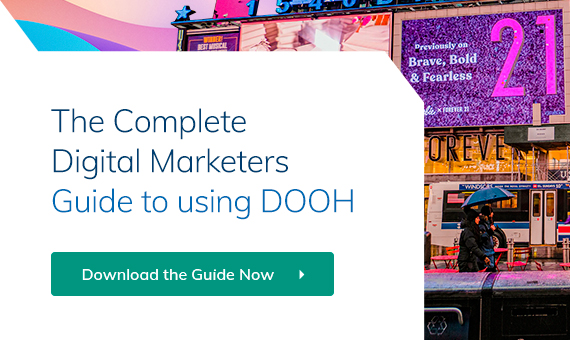Does your multi-channel advertising strategy currently include digital OOH?
If not, there’s never been a better time to investigate what outdoor advertising could offer.
Once a slow, costly and inaccessible process, recent tech developments have made it possible to buy, monitor and optimize your outdoor campaigns with just a few clicks.
Add that to the current environment, which is particularly suited to digital OOH advertising and digital OOH has the potential to become more effective than it has ever been before.
Below, we give you an overview of what digital OOH advertising is and explain why it’s such an effective marketing channel right now.
What Is OOH Advertising?
Out of home (OOH) advertising is simply any advertising experienced outside of a consumer’s home. This includes billboards located on major roads, digital screens in urban environments and bus shelters – in fact, there are a multitude of venues where OOH advertising can occur, including retail environments and Malls, educational institutions, government buildings and the like.
Digital out of home (DOOH) advertising is exactly the same – except those signs and billboards are digital (like Times Square’s famously colorful displays).
No longer just present in major cities, these digital billboards are now increasingly common across regional and smaller town centers too.
Programmatic digital out of home advertising (pDOOH) is a method of buying DOOH in real-time. pDOOH allows you to specify the conditions under which your ads are shown (such as target audience, temperature, date, or time of day) and provides real-time analytics on your campaign performance.
Examples of Digital OOH
To get a sense of how dynamic and effective digital OOH can be, you really need to see it in action. Here are some striking digital OOH examples for inspiration:
- Amsterdam’s Moco Museum used ticket sale data to dynamically trigger its digital OOH campaign across the city. This allowed the business to attract tourists when visitor numbers were down.
- At the height of the pandemic, dating app Bumble used London’s iconic iMAX cinema and other prime real estate to run a campaign based on high visibility and relatable humor.
![]()
(Image source: twitter.com)
- McDonald’s ran a campaign to advertise its frozen drinks range based on weather data. Ads would automatically trigger when the temperature reached 70 degrees Fahrenheit. If it reached 77 degrees, the ad would automatically include the city name and temperature.

(Image source: oohtoday.com)
What Is the Predicted OOH Growth Over the Next Few Years?
According to major studies, DOOH is predicted to grow over the coming decade.
Statista predicts that digital OOH spending worldwide is set to reach $8.3 billion by the end of 2021 and $15.9 billion by 2027 – more than doubling 2020’s figure of $7.4 billion in less than a decade.
Why Is Digital OOH So Effective Right Now?
We’re at a crucial point in the evolution of DOOH advertising. Far from stymying the growth of digital OOH, the COVID-19 pandemic has created the conditions for it to thrive.
When you add the technological advances that programmatic DOOH offers, you have the perfect opportunity to leverage digital billboards and outdoor advertising for major commercial gains.
Here are four reasons why it’s never been a better time to explore what DOOH ads could bring to your marketing efforts:
1. People have been spending more time outside
Over the course of the pandemic, outdoor pursuits like running, walking and cycling have proved a lifeline to many in an otherwise uncertain time.
As a result, people have been spending more time outdoors and paying more attention to their surroundings. This is great news for businesses that invest in outdoor ads and digital signage.
According to The Harris Poll, consumers now notice OOH advertising 45% more than they did prior to the pandemic.
2. Opportunities will increase as the world opens up
We’re by no means ‘out the other side’ of COVID-19 yet – but we can perhaps tentatively see some green shoots of recovery. From outside dining to public transport services, the world is gradually opening back up.
Consumers will be keen to experience these things again with lockdown restrictions easing, making an OOH campaign an ideal way to reach large, eager audiences refreshed at the prospect of spending money.
If you’re one of those businesses now opening up again, street-level OOH is a proven way of directing people towards your business. Over half of consumers notice digital OOH ads giving directions to a business, according to Nielsen. Of these, 65% will visit your premises immediately and 92% will make a purchase whilst there.
Compare that to the conversion rates you get online and you see the true power of digital OOH.
3. People increasingly see online ads as intrusive
People have spent the past 18 months working, living and socializing online. This has resulted in increased levels of digital burnout – 68% of consumers think that they spend too much time looking at screens currently, for example.
 (Image source: oaaa.org)
(Image source: oaaa.org)
This, alongside long-standing privacy concerns about online advertising, is contributing to consumers increasingly tuning out online and social media ads. In many cases, online ads are actively removed by ad blockers.
Unlike intrusive online advertising, digital OOH cuts through the noise by targeting people when they’re most open to your campaign messages. When consumers are waiting for public transport or walking around a city center, they have time to read, absorb and interact with your ads. In an era where competition for online real estate is increasing whilst interaction with it is waning, this could be your way of getting ahead of the competition.
4. You can now buy digital OOH programmatically
The main barriers to digital OOH adoption have been the traditional ad industry barriers.
- Drawn-out processes with layers of intermediaries between those trying to buy and sell real estate have made it inaccessible to all but the most well-staffed digital advertising departments.
- The lack of definable parameters for campaigns and limited analytics to determine success.
- Ticket size. Traditionally you would have to buy a network for a specific period of time, for a specific price.
Programmatic DOOH changes all of that by:
- Allowing buyers to bid on digital inventory directly and in real time
- Allowing buyers to specify the exact conditions under which their ads will be displayed (for example audience, weather or footfall)
- Providing access to real-time metrics and data insights
- Ensuring accessibility – buy one screen for one day for a specific hour, thereby reducing the ticket size, increasing cost effectiveness and optimizing to reach your target audience when they are more likely to see the ad
These developments open up the OOH industry, making a once unaffordable channel accessible to all – for varying budgets – and providing scope for campaigns to be more interactive, engaging and successful than ever before.
Are You Looking For a pDOOH Partner?
Digital OOH advertising has the potential to be hugely effective right now, particularly when bought programmatically.
To realize this potential, you need a programmatic DOOH platform that connects you seamlessly with the inventory you need.
At The Neuron, we connect agencies and SMBs directly with sellers on a platform that offers automated bidding and removes all the middlemen from the process. You can upload and optimize your creative in just a few clicks, giving you unprecedented freedom and control over your DOOH campaigns.

